Planting Artichoke Seeds: A Guide to Growing Stunning Artichokes
How To Grow Artichoke Seeds - Do It Easily In 4 Steps!
Artichoke Seeds for planting
Are you curious about growing artichokes right in your backyard? Or are you intrigued by the stunning beauty these unique plants can add to your garden? Whether you're an artichoke lover, an avid gardener, or both, you're in for a treat. In this blog post, we'll provide a detailed guide on how to grow artichokes from seed. Join us on this exciting journey to cultivate your own artichoke plants, a journey as rewarding as it is green!
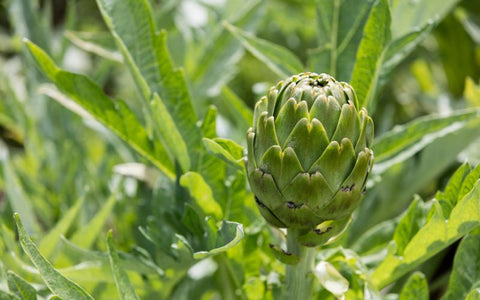
How To Grow Artichokes From Seed: Do It Easily In 4 Steps!
1. Why should you have artichokes in your garden?
2. Where do artichokes grow best?
3. How long does it take to grow artichokes?
4. How to grow artichokes from seed: A detailed guide
4.1 Prepare and sow seeds
4.2 Vernalize artichoke seedlings
4.3 Plant artichoke seedlings in garden beds
4.4 Plant artichoke seedlings in containers
5. How to take care of artichokes
6. When and how to harvest artichokes
7. Conclusion
1. Why should you have artichokes in your garden?
Many plants are worth the effort to include in your garden. And artichokes can be an excellent addition because it offers many benefits, both beauty, nutrition, and joy. Here are the main benefits of growing them:
Edible and nutritious: Artichokes are edible and quite nutritious. Growing your own allows you to have fresh, organically grown plants right from your backyard. Don’t forget to discover “How do you eat an artichoke?” here to know great recipes.
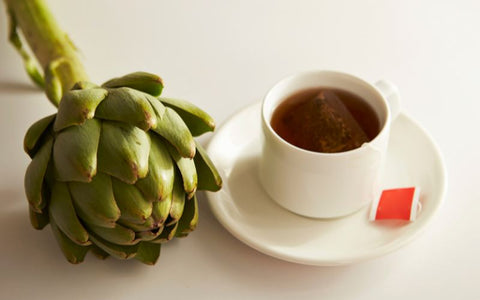
Attractive plants: These plants are apparently striking. They have large, deeply cut, silvery-green leaves that add unique texture and color to your garden. If left unharvested, the buds bloom into a stunning, thistle-like purple flower.
Easy to grow: These plants are easy to grow in various climates. They can tolerate some frost and prefer mild winters and cool, foggy summers, similar to their native Mediterranean climate.
2. Where do artichokes grow best?
Artichokes thrive in areas with mild winters and cool, foggy summers, reflecting their native Mediterranean climate. For instance, California—especially the central coast—is the primary artichoke-growing region in the United States. However, they can be grown in many other areas with the proper care and attention.
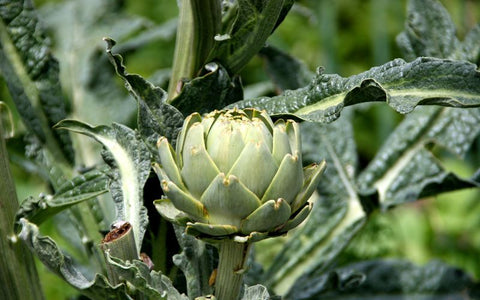
Artichokes are usually perennial plants in zones 7-11 but can also be grown annually in colder climates. They prefer full sun but can tolerate partial shade and grow best in well-drained soil. They also prefer slightly alkaline pH levels.
3. How long does it take to grow artichokes?
It can depend on the variety and whether you're starting from seed, transplants, or divisions:
From seed: If you're growing artichokes from seed, they should be started indoors in late winter or early spring. They will need around 8 to 12 weeks before being transplanted outside after the danger of frost has passed. This means you're looking at a total growing period of about 5-6 months before you can start harvesting.
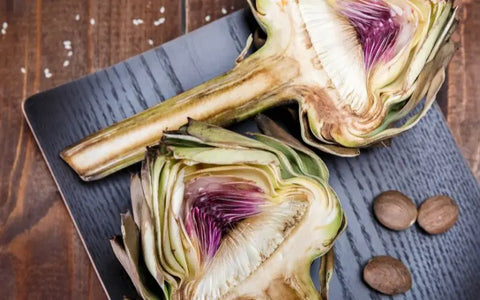
From transplants or divisions: If you're using transplants (young plants) or divisions (offshoots from established plants), these can be planted directly outdoors in the spring or fall. It typically takes a transplant or division about 2-3 months to produce a harvestable artichoke.
4. How to grow artichokes from seed: A detailed guide
Follow these 4 main steps to grow these plants, starting with seed preparation, then vernalizing (optional), and transplanting seedlings into the garden.
4.1 Prepare and sow seeds
Begin by choosing high-quality artichoke seeds from a trusted supplier. Several varieties are available, including Green Globe, Purple of Romagna, and Imperial Star. Choose the suitable type for your area. It is best to read the notes on the packaging. Next, follow the guides below:
- Fill seed trays or small pots with a high-quality, well-draining seed-starting mix.
- Place 1-2 seeds per cell or pot, about 1/4 to 1/2 inch deep.
- Water thoroughly but gently so you don't wash away the seeds. The soil should be damp, not waterlogged.
- Keep the trays or pots in a warm spot, beginning around 70-80°F (21-27°C). A heating mat can help maintain this temperature if necessary.
- Seeds should germinate in about 10-14 days. Keep the soil constantly moist but not soggy.

4.2 Vernalize artichoke seedlings
Artichokes are perennial plants that usually produce buds (the part we eat) in their second year of growth. We use a process called vernalization to get them to produce in the first year.
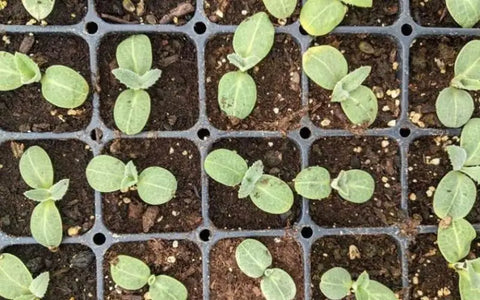
- You can begin vernalization once your seedlings have 2-3 true leaves.
- This involves subjecting the young plants to about 10 cold but not freezing days, beginning around 50°F (10°C). This can be done by placing them in a cool room or a cold frame.
- After vernalization, please bring them back to normal growing temperatures.
4.3 Plant artichoke seedlings in garden beds
Once all risk of frost has passed and your seedlings have grown to about 8-10 inches, they're ready to be planted tall outside.
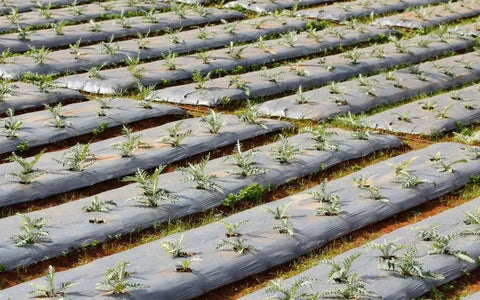
- Choose a location with full sun and well-drained soil. Artichokes also prefer slightly alkaline soil.
- Prepare the bed by removing weeds and amending the soil with compost or a balanced organic fertilizer.
- Dig a hole that's big enough for the seedling's root ball, and space each plant about 3-4 feet apart, as they need plenty of room to grow.
- Place the seeding in the hole, backfill it with soil, and press down lightly to remove any air pockets.
- Water thoroughly after planting.
4.4 Plant artichoke seedlings in containers
Artichokes can also be grown in containers if you don't have space. Choose a container at least 18-24 inches deep and equally wide.
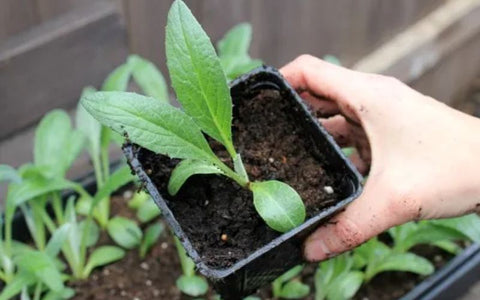
- Use a high-quality potting mix and ensure the container has good drainage to prevent waterlogging.
- You can plant one artichoke per container, following the same planting process as a garden bed.
- Containers will dry out faster than garden beds, so check the soil moisture regularly and water when the top inch of soil feels dry.
- Feed container-grown artichokes with a balanced liquid fertilizer every 2-4 weeks during the growing season to ensure they get all the necessary nutrients.
5. How to take care of artichokes
After planting, care for your plants by watering constantly, watching out for pests and diseases, and mulching around the plants to conserve water and suppress weeds.
- Watering: Artichokes need consistently moist soil but should not be waterlogged. Water deeply once or twice a week and use mulching around the plants to help retain soil moisture.

- Fertilizing: Feed your plants with a balanced organic fertilizer to ensure they get all the necessary nutrients. You can do this every 4-6 weeks during the growing season.
- Mulching: Applying a layer of organic mulch around the plants will help conserve water, suppress weeds, and add nutrients to the soil.
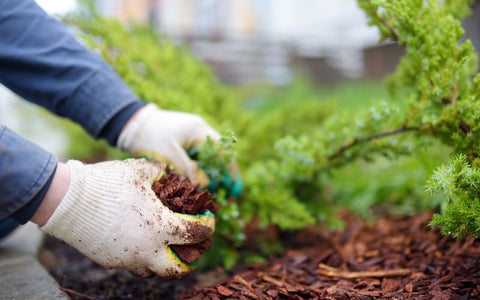
- Pests and Diseases: Monitor your plants regularly for signs of pests or diseases. Artichokes can be affected by aphids, slugs, snails, and certain diseases like powdery mildew or botrytis rot. Remove and dispose of any diseased leaves and control pests as soon as you notice them.
- Pruning: Remove dead or damaged leaves as you see them. This improves the plant's appearance and helps prevent the spread of diseases.
6. When and how to harvest artichokes
Knowing when to harvest artichokes can be tricky if you've never done it before. The key is to pick the buds before they have a chance to flower.
When to Harvest: Check your plants for harvest-ready buds in mid to late summer. A bud is ready to harvest when it is large, and firm, and before the bracts (the leaf-like parts that make up the bud) start to open. If the bracts start to split apart and look like they're about to bloom into a flower, the artichoke is past its prime for eating.
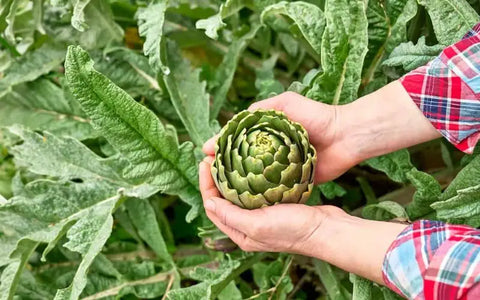
How to Harvest: To harvest the artichoke, cut the stem about 1-2 inches below the base of the bud using a sharp knife or pruning shears. Be careful not to damage the plant or the bud as you do this.
Additional Harvesting Tips: The top bud on your artichoke plant will be the largest and typically ready to harvest first. After it's harvested, smaller side buds will develop along the stem. These can also be harvested when firm and before the bracts open.
Once harvested, store your plants in the refrigerator, then use in dishes or make tea (see how to make artichoke tea here).
Artichokes Care
When the weather gets colder, you need to protect your artichokes. After you pick them, cut off the extra leaves and cover the roots with a lot of stuff like dirt or hay. If it doesn't get too cold where you live, you can leave them in the ground and put some more stuff on top of them. If it gets really cold, you have to dig them out and keep them in a cool place with some wet sand or peat around them. That way they won't dry out. In the spring, you can break them into smaller pieces and plant them again. They will grow better that way.
Artichokes should be watered frequently throughout the year by providing 1 to 2 inches of water per week in multiple applications. It is recommended to use drip irrigation if possible for efficient watering.
Frequently Asked Questions
1. How can comfrey be grown in the garden and what are the optimal conditions for its growth?
Comfrey (Symphytum officinale), a robust perennial herb, thrives in a variety of growing conditions. For optimal growth, it is recommended to plant comfrey in an area that receives partial to full sun exposure and has moist and fertile soil. This herb can be propagated through root cuttings or crown divisions.
2. How many artichoke plants should be planted to ensure a good harvest?
To ensure a good harvest of artichokes, it is recommended to plant at least two artichoke plants. Artichoke plants are sizeable and require adequate space in the garden to thrive. By planting a minimum of two plants, you can increase the likelihood of producing a sufficient number of artichoke flowers for a successful harvest.
3. Why might an artichoke plant not flower in a given year?
An artichoke plant may not flower in a year for various reasons. One common reason is if the plants do not receive enough chilling temperatures, which can lead to some plants failing to flower. It is important to plant early based on your local conditions to ensure optimal growth and flowering. Additionally, high temperatures during the flower stalk formation stage can also prevent the plant from flowering. Therefore, it is crucial to provide the plant with the right temperature conditions to promote blooming.
7. Conclusion
With the detailed steps we've provided in this blog, you are now armed with how to grow artichokes from seed. Whether you're looking forward to their delectable taste or the incredible beauty of their blooming flowers, you're on the right path. We hope this guide encourages you to embrace the experience of growing artichokes and adds another flourishing chapter to your gardening story. Happy gardening, and here's to a bountiful harvest!





Leave a comment